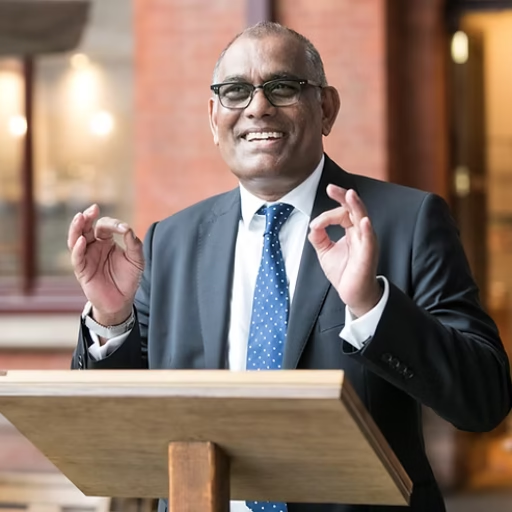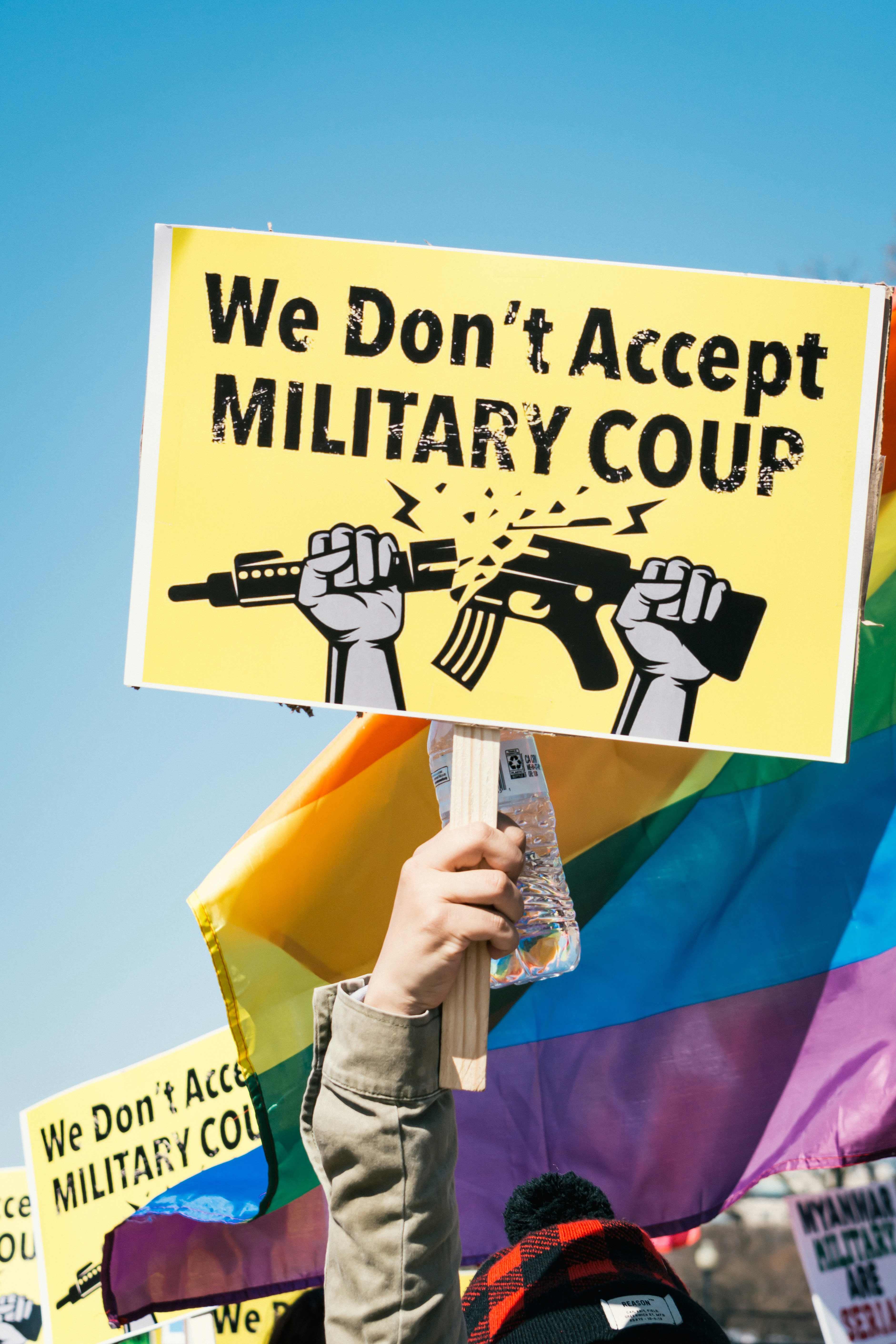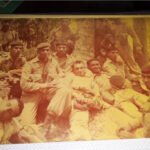Has secular Bangladesh been ceded to Taliban/Pakistan-style Islamists and a complicit “deep state”?
Introduction
Bangladesh was born in 1971 from a struggle that married language, culture and a secular political vision to the aspiration of national self-determination. For decades after independence, the tensions between secular nationalism and political Islam have ebbed and flowed across the country’s politics, society and security apparatus. The question many ask today — and which animates this essay — is blunt and unsettling: is Bangladesh now “dancing” with pseudo-Islamist outfits? Are Pakistan- or Taliban-style Islamist movements, sometimes aided or tolerated by state actors, gaining ground to the point of threatening the secular spirit of the liberation?
To answer that, we need to look at history and memory, the rise of specific Islamist organisations (political and militant), episodes of violence and protest, the role of the state and security services, regional influences, and the counter-currents of Bangladeshi society that push back. The simple answer is: there are worrying signs and real risks — but the picture is complex and contested. The stakes are high: politics, civic freedoms, women’s rights, religious minorities, and the historical memory of 1971 are all in play.
1) Historical legacy: 1971 and the long shadow of collaborators
The roots of contemporary political Islam in Bangladesh are entangled with the country’s traumatic birth. Certain Islamist groups and leaders opposed the independence movement in 1971, and some elements collaborated with the Pakistan Army; this history has left a lasting legacy in politics and political memory. Over the decades, parties like Jamaat-e-Islami reconstituted and sought political relevance, which prompted fierce contestation over their role and legitimacy. The prosecution of some Islamist leaders for crimes connected to 1971 and the legal and political battles that followed have kept these questions alive in public life. Wikipedia
This historical grievance shapes modern debates: for many secularists, the re-emergence or influence of certain Islamist parties is not merely ideological — it’s a revival of forces that once opposed the nation’s very freedom. For others, the narrative is more pragmatic: Islamist parties are long-standing political actors, and criminal allegations against them have also become politically charged.
2) Two categories: political Islamists vs violent jihadists
It helps to distinguish at the outset between:
• Political Islamist parties and groups (e.g., Jamaat-e-Islami, other orthodox religious parties, and extra-parliamentary religious movements like Hefazat-e-Islam). They pursue influence through politics, street mobilisation and social institutions (madrasas, charities, media).
• Violent jihadist organisations (e.g., Jama’atul Mujahideen Bangladesh — JMB — and smaller cells), which have used terrorism and violence with the declared aim of imposing a strict version of Islamic law.
Both categories interact with—and sometimes feed—each other, but they are not identical and must be tracked separately. JMB-style militancy and the mass conservative activism of groups like Hefazat each pose different threats and create different openings for state actors. Combating Terrorism Centre at West Point+1
3) The violent chapter: JMB and the 2005 nationwide bombings
Bangladesh’s most dramatic contemporary manifestation of violent jihadist capability came in August 2005, when the Jama’atul Mujahideen Bangladesh (JMB) coordinated simultaneous explosions across the country — roughly hundreds of small blasts in dozens of districts — to terrorize the population and challenge the state’s authority. The group later escalated to targeted attacks on courts and judges, and its network and leadership became the focus of aggressive counter-terror operations and prosecutions. The JMB episode demonstrated that domestic militant networks could flex frightening capabilities, but the state’s security forces ultimately disabled much of that structure. Combating Terrorism Centre at West Point+1
The JMB example is essential for two reasons. First, it showed that militant Islamist threats in Bangladesh have indigenous roots and organisational capacity — they were not simply imported proxies. Second, state response — policing, intelligence crackdowns and trials — played a significant role in dismantling the JMB’s national infrastructure.
4) The rise of mass conservative movements: Hefazat-e-Islam (2013 and after)
A different phenomenon from militia violence is the mass mobilisation of conservative ulema-led movements such as Hefazat-e-Islam. Emerging publicly in 2013 with a 13-point demand list (including restrictions on women’s public space and curriculum control), Hefazat staged large demonstrations that shocked many urban, liberal communities and focused attention on issues of gender, education and public morality. Their 2013 demonstrations and the state’s response produced intense debates about public space, women’s rights and the boundary between religion and state policy. The Guardian+1
Hefazat is not readily classifiable as a conventional party seeking parliamentary power — its strength is in street power, religious authority and influence in madrasa networks. That makes it a force that can be courted, co-opted or confronted by governments depending on political calculations.
5) Political interplay: war-crimes trials, exclusion, and openings for Islamist forces
From 2010 onward, the Awami League government (under Sheikh Hasina) pursued war-crimes trials against leaders of Islamist parties who were accused of collaborating with Pakistan in 1971. The trials resulted in convictions and executions that many international observers saw as justice for historic crimes; other critics argued the tribunals were politicised and used to marginalise the Islamist opposition. The result was a highly polarised environment in which questions of transitional justice, rule of law, and political legitimacy all overlapped.
These trials and the political exclusion of Islamist leadership altered the configuration of influence. On the one hand, removing indicted leaders curtailed some organisations’ overt political capacities. On the other hand, such exclusions and polarising politics created grievances and openings for non-electoral Islamist activism, and at times intensified sympathy for leaders among parts of the population who viewed the prosecutions as victor’s justice. The net effect has been neither simply growth nor simple decline — rather, a re-shaping of Islamist influence into other channels (street movements, social institutions, and informal alliances). TIME+1
6) Allegations of a “deep state” and collusion: what evidence exists?
The claim that Islamist groups are colluding with a “deep state” (security agencies, intelligence, unelected structures within the state) is a serious one. Evidence in democracies is often murky and involves interpreting patterns rather than smoking-gun documents. In Bangladesh’s case, analysts point to several types of evidence that raise legitimate questions:
• Tactical tolerance: At times, security forces have been accused of turning a blind eye to certain Islamist actors or failing to clamp down equally on all groups, especially when those actors are seen as beneficial to particular political aims.
• Political alignment: Governments sometimes cultivate conservative religious groups to broaden support or to counter secular opponents.
• Selective enforcement: Human rights and policy reports have documented instances where enforcement has been selective or where state actors have targeted particular opposition figures while neglecting others.
• Intelligence linkages: Accusations about foreign intelligence or cross-border networks (for training, funding, or sanctuary) are frequent in the region; some evidence points to transnational linkages between extremist ideologies and actors across borders, though direct state–militant collusion claims require strong evidence and remain contested. IISS+2Carnegie Endowment+2
High-quality international commentary and regional analyses (e.g., IISS, Carnegie) caution that political and security elites sometimes use Islamist actors tactically; but they also emphasise the danger of overstating such collusion without clear proof. The balance of academic and policy literature suggests patterns of tactical alignment and selective tolerance are plausible, while direct, systematic, institutional collusion between the military/intelligence and national Taliban-style militants is much harder to prove and is often contested. IISS+1
7) Regional drivers: Pakistan, Saudi influence, and ideological diffusion
Bangladesh is not isolated. Pakistan’s own military-Islamist history, Saudi funding of madrasas and ideas, and the global flows of jihadi ideology create a regional ecosystem in which conservative Islamist ideas can diffuse. However, Bangladesh’s Islamist formations are mostly domestically constituted; links to Pakistan or the Afghan Taliban are sometimes ideological or tactical rather than command-and-control. That said, transnational networks for funding, ideological inspiration, and operational tradecraft can cross borders — making regional geopolitics relevant to domestic stability. efsas.org+1
Importantly, while Pakistan’s inter-services relationship with Islamist proxies has been documented in other contexts, Bangladesh’s political dynamics are distinct. Historical grievances from 1971 fray relations with Pakistan-connected narratives; yet political actors within Bangladesh have at times used external Islamist narratives to mobilise domestic constituencies. In short, influence exists but is mediated through local actors.
8) Recent manifestations (post-2010s to 2025): protests, legislation and political realignments
From the 2010s onward, Bangladesh experienced waves of contestation: the Shahbagh movement demanding harsher punishment for 1971 collaborators; Hefazat’s street demands in 2013; JMB’s militant phase in the mid-2000s; and the government’s selective legal measures. In more recent years shifts in national politics (including the 2024–2025 upheavals that produced new governments and contestation) have changed incentives for Islamist mobilisation. News reports in 2025 describe large Hefazat rallies opposing progressive legal reforms for women and an enlarged public role for Islamist parties in protests that targeted the previously dominant Awami League — signalling a resurgence of public visibility for certain conservative groups. These rallies show that, politically, conservative Islamist groups remain capable of mass mobilisation and continue to influence public debate on social issues. AP News+1
This re-emergence must be read alongside institutional changes (bans, deregistrations, and legal prosecutions) and fragile political transitions. Times of political flux create openings for groups with disciplined local networks, madrasa bases, and mobilizational capacity to push agendas and seek leverage.
9) Are Islamist groups now acting as proxies for a “deep state” to destabilise the secular order?
The allegation that Islamist groups are being used as a destabilising tool by a “deep state” — for example, to undermine secular parties or to create a political environment favourable to certain actors — deserves scrutiny.
Arguments supporting that allegation point to:
• Historical precedents elsewhere where security services have used non-state religious actors for deniable influence operations.
• Patterned selective enforcement of laws and targeted treatment of opposition activists, which can create political instability and allow other actors to shape public discourse.
• The convenience of street power: governments or unelected powerholders sometimes find it expedient to use groups that can mobilise constituencies outside parliamentary processes.
Arguments against it note:
• Lack of incontrovertible public evidence tying state institutions to organised, systematic support for militant or Taliban-style groups within Bangladesh.
• Domestic agency of Islamist groups — many are locally organised and pursue their own agendas that sometimes conflict with state preferences.
• Political complexity — multiple elites (government, opposition, business, religious leadership) operate with different incentives, making any single explanation incomplete. IISS+1
Therefore, while tactical, situation-specific collusion or tolerance (short-term alignment of interests) is plausible and documented in comparative contexts, the claim that Bangladesh has been wholly ceded to a state-backed Islamist proxy architecture — equivalent to a Pakistani ISI-style sponsorship of militant fronts — lacks broad, undisputed evidence in public sources. The truth may be more granular and organisationally messy: selective toleration, political alliances of convenience, and episodic use of Islamist mobilisation have occurred — but they operate within a contested, fragile political arena rather than as a neat “deep-state takeover.” IISS+1
10) What would “falling into the hands” look like — and how likely is it?
If Bangladesh were to truly “fall” to Taliban/Pakistan-style Islamist control, we would expect: dismantling of core secular constitutional guarantees; broad imposition of strict Sharia that overrides civil law; systemic sidelining of pluralist institutions; and a cascading collapse of minority rights and women’s freedoms. That scenario would require coordinated control of the military/intelligence, judiciary, and legislature — a feat of enormous difficulty in a populous, diverse country with significant urban middle classes and an active civil society.
Short of that extreme, more probable outcomes include:
• Incremental legal and social rollbacks on women’s rights, minority protections, and civic freedoms via incremental legislation or administrative change.
• Stronger social pressure on public life (dress codes, segregation) through local enforcement, vigilantism or informal power.
• Periodic spikes of violence or intimidation against dissenters, journalists, academics and minorities if unchecked.
These more modest but dangerous outcomes are plausible if political actors continue to weaponise religion and the state fails to enforce equal protection. The country’s long civil society tradition, active media, and diaspora voices are countervailing forces — but they need institutional support and legal safeguards to be effective. State Department+1
11) Where is the evidence strongest — and where is it weak?
Strong evidence:
• The historical role and political reappearance of Islamist parties like Jamaat-e-Islami. Wikipedia
• The JMB’s violent campaign in 2005 and subsequent security operations that detained and tried militants. Combating Terrorism Centre at West Point
• Mass mobilisations led by Hefazat in 2013 and their social demands. The Guardian+1
• International reporting on selective enforcement and political polarisation that creates openings for extra-parliamentary actors. Carnegie Endowment+1
Weaker/equivocal evidence:
• Systematic, institution-level collusion between the entirety of Bangladesh’s security services and organized militant Islamist proxies analogous to documented models in other countries. Public evidence is fragmentary and often contested; credible analysts urge caution in drawing direct equivalence. IISS
12) Social resilience: why Bangladesh is not yet lost
Bangladesh’s social fabric contains powerful counterforces:
• Secular history and education: the language movement and liberation narrative remain core identity anchors in many communities.
• Women’s economic power: the garment sector employs millions of women whose economic autonomy underpins social liberalism.
• Vibrant civil society and press: despite pressures, NGOs, human rights groups and journalists continue to document abuses and mobilise opinion.
• Diaspora activism: millions abroad insist on preserving the memory and values of 1971, supporting civic institutions back home. ScienceDirect+1
These forces do not guarantee outcomes, but they provide institutional and social buffers against rapid, wholesale rollbacks.
13) Recommendations: what should concerned citizens, civil society and policymakers do?
-
Protect independent institutions: strengthen judicial independence, press freedom, and impartial law enforcement.
-
Transparent security oversight: civilian oversight of intelligence and security forces reduces opportunities for covert co-option.
-
Inclusive politics: open democratic space reduces incentives to weaponise religion for short-term gains.
-
Counter-extremism that is rights-respecting: combine de-radicalisation, education and targeted policing, avoiding blanket measures that fuel grievance.
-
Support women’s economic empowerment: protect and expand spaces where women’s independence is normalised.
-
Defend historical memory: preserve accurate teaching and commemoration of 1971 to inoculate against revisionist narratives. State Department+1
14) Conclusion — a cautious, evidence-based judgment
Is Bangladesh “dancing with pseudo-Islamist outfits”? In places and moments — yes. Islamist movements (both political and social) are active, can mobilise large constituencies, and sometimes exert influence on law and policy. Islamist militant cells have carried out violent campaigns in the past, demonstrating real security risks. There are also plausible patterns of selective tolerance and tactical alignment between political actors and religious groups that create opportunities for Islamist forces to influence public life.
Is Bangladesh falling to a Taliban/Pakistan-style Islamist takeover with a complicit deep state? The evidence does not support that dramatic, unitary claim as a fact. Instead, the situation looks more like a contested battleground: episodic alliances, pragmatic toleration, and aggressive politics have produced periodic gains for conservative Islamist forces — but institutional pluralism, civic resilience and political complexity continue to limit the worst-case outcome. The threat is real, but nuanced: the danger is cumulative and incremental, not necessarily instantaneous collapse. That means vigilance, institutional reform and civic action matter now more than ever. Combating Terrorism Centre at West Point+2The Guardian+2
Selected bibliography & sources
(These are sources referenced or consulted for facts and context in this essay — further reading recommended.)
-
“Bangladesh Jamaat-e-Islami.” Wikipedia (overview of Jamaat history and controversies). Wikipedia
-
“Jamaatul Mujahidin Bangladesh: Weakened, But Not Destroyed.” Combatting Terrorism Centre, West Point (analysis of JMB and 2005 attacks). Combating Terrorism Centre at West Point
-
“Bangladesh simmers as Islamic conservatives and liberal activists clash.” The Guardian, Apr 2013 (reporting on Hefazat-e-Islam rallies). The Guardian
-
“Hefazat-e-Islam and the rise of Islamic fundamentalism in Bangladesh.” East Asia Forum, Feb 2022 (analysis of Hefazat’s agenda and influence). East Asia Forum
-
US Department of State — “2022 Report on International Religious Freedom: Bangladesh.” (context on constitutional provisions, religious freedom and tensions). State Department
-
Carnegie Endowment analysis — “Bangladesh Is Well-Positioned to Build a New Political …” (2024) (political transition and security challenges analysis). Carnegie Endowment
-
IISS analysis — “Bangladesh: domestic turmoil and regional insecurity” (2024) (on political flux, security and regional implications). IISS
-
Reuters, AP and Time coverage (various articles on trials, rallies and political developments cited in the essay). Reuters+2AP News+2
-
Australian government listing and commentary on JMB (national security assessment). Australian National Security Website



